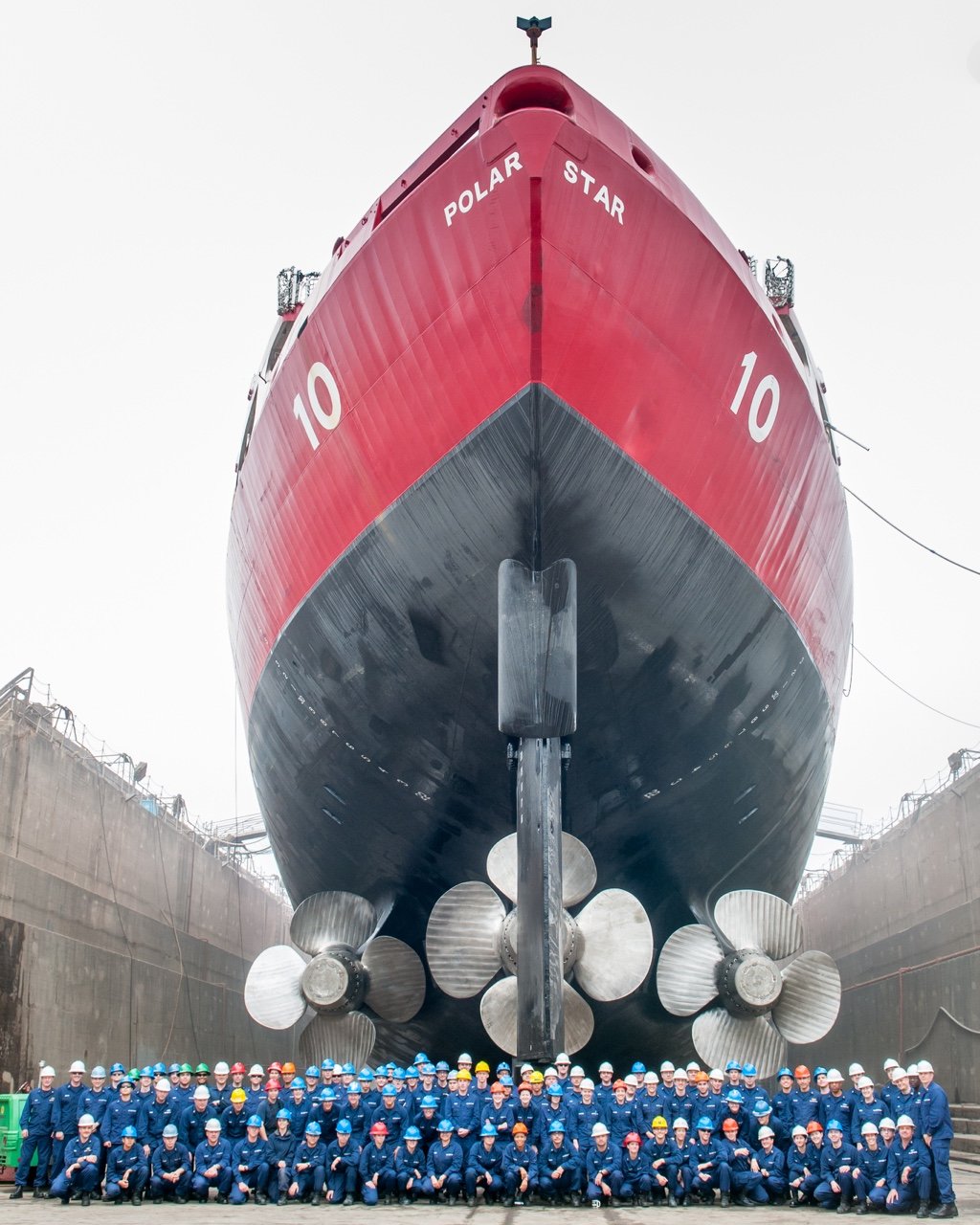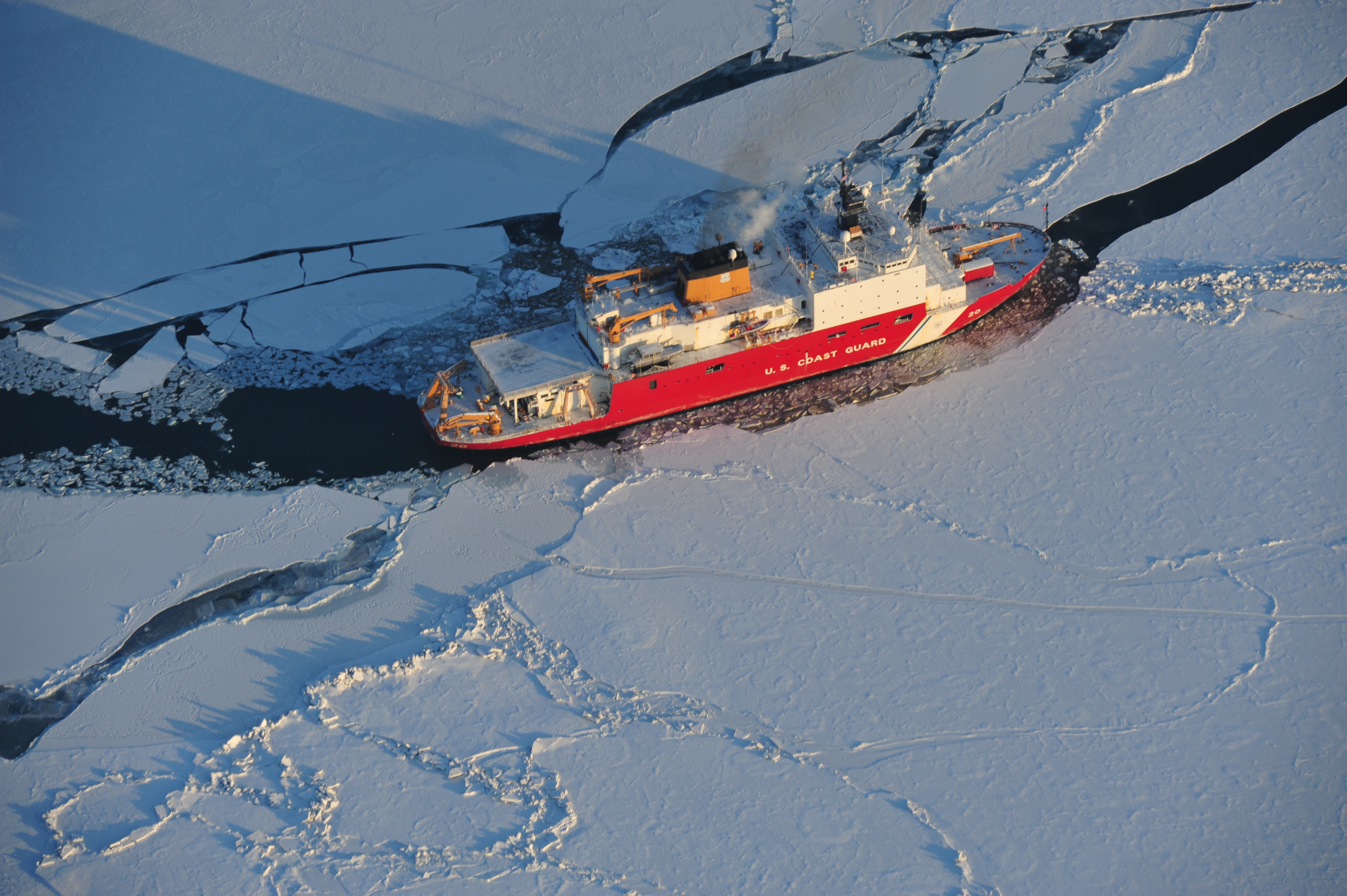
The Coast Guard wants to buy three heavy and three medium icebreakers, but given the realities of current budget restraints, the service would be better off considering block-buying four ships all of the same design.
The need for new icebreakers is not new. At the moment, the Coast Guard has one medium icebreaker, USCGC Healy (WAGB-20), and one aging heavy, USCGC Polar Star (WAGB-10), able to support U.S. interests in the Arctic and Antarctic regions. The hang-up has been convincing Congress to pay for new ships at a time of tight budgets.
This is why the analysis in a report presented Friday to the American Society of Naval Engineers Arctic Day conference is significant – the report states the cost of a fourth heavy icebreaker, estimated to be nearly $100 million less than the estimated cost of building a first-in-class medium icebreaker.
“Congress should fund four icebreakers, of a common design. Four could carry out primary missions,” said Eugene Van Rynbach, who presented the analysis.
Mission requirements mean the Coast Guard must buy heavy icebreakers, so the research and testing needed to develop a new heavy icebreaker will be funded first. But instead of going through the same pricey process of designing medium icebreakers, the Coast Guard could simply buy a fourth heavy and accomplish the same mission set, Van Rynbach explained.

The average cost per heavy icebreaker is estimated to be $791 million, but the cost of each ship goes down as each is built. Research and testing expenses drive up the cost of the first ship to an estimated $983 million, but down to $692 million for the final ship, Van Rynbach said.
Meanwhile, if the Coast Guard were also to develop a medium icebreaker, research and development costs drive up the price of the first ship built to an estimated $786 million. Ultimately, the cost per medium icebreaker would be $618 per ship, Van Rynbach said.
Van Rynbach, a commercial ship designer with Annapolis, Md.-based Herbert Engineering Corp., is also a member of the Committee on Polar Icebreaker Cost Assessment which created the report titled “Acquisition and Operation of Polar Icebreakers: Fulfilling the Nation’s Needs.” In July, committee chair Navy RADM. Richard West (ret.) submitted the report to Secretary of Homeland Security, Elaine Duke.
Since the Coast Guard must use a heavy icebreaker in some of the Arctic regions it patrols, the service is already planning the purchase of three of these ships – one to be at sea, one to be in port for training, one to undergo any refurbishment and repairs, Van Rynbach said.
Though funding to build new icebreakers hasn’t been secured, the Coast Guard is moving forward with the planning process. Design proposals for new icebreakers are due next month.
Coast Guard leadership has for years pressed Congress for more funding to increase its icebreaking capabilities. The concern is other nations, notably Russia and China, are increasingly sending ships to the Arctic as a way to stake claims to fishing and sea-floor mineral rights.
Protecting U.S. interests, though means the Coast Guard needs three heavy and three medium icebreakers, Coast Guard Commandant Adm. Paul Zukunft told the House Appropriations homeland security subcommittee in May. This requirement for a mix of heavy and medium icebreakers has been discussed by Zukunft for years.
But Van Rynbach said his group disagrees with the analysis used to justify an approach building three each of heavy and medium icebreakers.
“In developing its independent concept designs and cost estimates, the committee determined that the costs estimated by USCG for the heavy icebreaker are reasonable. However, the committee believes that the costs of medium icebreakers identified in the High Latitude Mission Analysis Report are significantly underestimated,” the assessment states
Since the Coast Guard must use a heavy icebreaker in some of the Arctic regions it patrols, the service is already committing to buy three of these ships – one to be at sea, one to be in port for training, one to undergo any refurbishment and repairs, Van Rynbach said.
Given this mission reality, it makes more fiscal sense for Congress to approve a block buy acquisition strategy of a single design. Doing so, Van Rynbach said, “Would encourage competitive shipyard bidding.”
Buying four such icebreakers would also encourage shipyard infrastructure investment, he added, because the company awarded the contract will know they’ll have the work needed to justify such an expansion. Plus, as more ships are built, Van Rynbach said costs will decrease as the shipbuilder applies lessons learned from previous ship build to bring down costs.
With Polar Star more than 40 years-old and nearing the end of its already extended lifespan, the assessment also warns, “The nation is at risk of losing its heavy polar icebreaking capability— experiencing a critical capacity gap.”
Van Rynbach said, “The time is now.”





